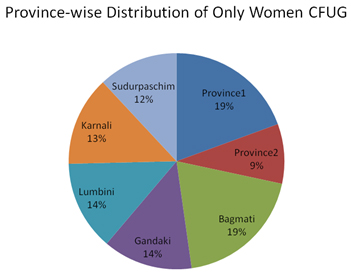
Inclusiveness in Community Forestry: a long way to translate policy into practice
Background

khem.century@gmail.com
Community Forestry (CF) is a major step forward in the forest management of Nepal. Until the late 70s, people and forests were segregated from each other through the implementation of the Private Forests Nationalization Act, 1957. The repercussions were seen as vast deforestation in hills and Terai and forest encroachment. It took more than two decades to realize the need for people’s participation in protection and management of forest. It was reflected in Forest Act amended in 1978, which opened an avenue for the major shift in forest management from state control to the community-ownership. Master Plan for Forestry Sector (MPFS), 1988 set CF as a priority program. The program was aimed at developing and managing forest resources through the active participation of communities to meet their basic needs. The MPFS envisioned increasing the area of sustainably managed natural forests and restore open and degraded forests. In compliance, new forest legislation (1993) passed by the first elected parliament after the reinstate of the democracy put forward a provision to handover forests to the Community Forest User Group (CFUG), which was recognized by the law as the independent self-governed autonomous entity, and provided with special rights to use total benefits deriving from the management of community forest. To date, 2.65 million hectares of forest areas have been handed over to 22,266 CFUGs. Over 200 thousand people involve in forest resource management at carrying leadership positions; of which one third are women. The CFUGs have been practicing Gender Equity and Social Inclusion.
Gender Equity and Social Inclusion (GESI) in CF
A young and energetic woman Ms. Bharati Pathak has been leading the central committee of the Federation of Community Forestry User Groups-Nepal (FECOFUN). There are many female CFUG leaders over the country. It is not a coincidence. Rather, it is an outcome of deliberate actions. The CFUG has been strategically utilized as the platform for women’s leadership development. There are 1060 community forests solely managed by the All Women’s Community Forestry User Group (WCFUG). More than 50 thousand hectares of the forest area have been managed by women alone. There is a mandatory provision for at least 33% of women’s representation in EC. As of now, the average figure of women representation in EC has been maintained at just 33.1%, according to the national database maintained by the Department of Forests and Soil Conservation.

Data Source: Department of Forests and Soil Conservation, 2021
The policy framework has been set to enable GESI in forestry. Forest policy 2015 has stressed access and special rights of women and marginalized communities to the forest and equitable sharing of benefits deriving from its management. The years 1990s and 2000s can be considered as the golden period for ensuring participation in forestry. Participatory forest management and participation in CF were second-generation issues, and Gender Equity and Social Inclusion, and multistakeholder engagement in forestry were identified as the major components of the third-generation issues in forestry.
To include the disadvantaged groups in society in the mainstream, the Forest Act, 2019 has set a special provision of allocating a patch of community forest area to the group of people with the lowest income as identified by the wellbeing ranking. The set-aside area can be utilized to carry out income-generating activities by the poor. CF’s forest products sales and distribution directive, 2016 has given special attention to the poor users in the equitable distribution of forest products. Traditional occupation groups such as blacksmiths are given special rights to collect forest produce at a subsidized rate. Procedure 2014 has provisioned to allocate 35% of total CF income for the programs targeted to the poor, women, Dalits, and ethnic group. The provisions have been reflected in CF’s constitutions and operation plans.
Despite the fact that there are several policy documents offering inclusiveness of women in the CF, academicians and researchers argue that there is just a token representation in the CFUG executive committee, which is still in need of transformation to active participation in decision making. While talking about the oppressed group of society like Dalits, neither is there adequate policy provisions nor practice.
The Way forward
There are still a lot of rooms to intervene for achieving GESI in Community Forestry. The results cannot be realized unless the policies are well-implemented, and effective implementation cannot be possible unless the policies are devised predicated on evidence. For that, research-based policy formulation is a must. Since the GESI is a cross-cutting issue, there is a great research scope for the youth who advocate establishing an equitable and inclusive society. In addition to devising legal tools for including oppressed group, creating an enabling environment is a crucial component to achieve better outcome. Without empowering the excluded groups of society, elite dominance in decision-making for resource use cannot be eradicated. Users need to prepare an implementation plan to ensure social inclusion and evaluate the progress periodically. The concerned ministry may develop an institutional framework, which will focus on facilitating the CFUG to achieve GESI in practice. Otherwise, the elite capture on resources may last forever.
The author is Chief of Ratuwamai Afforestation Project, Jhapa